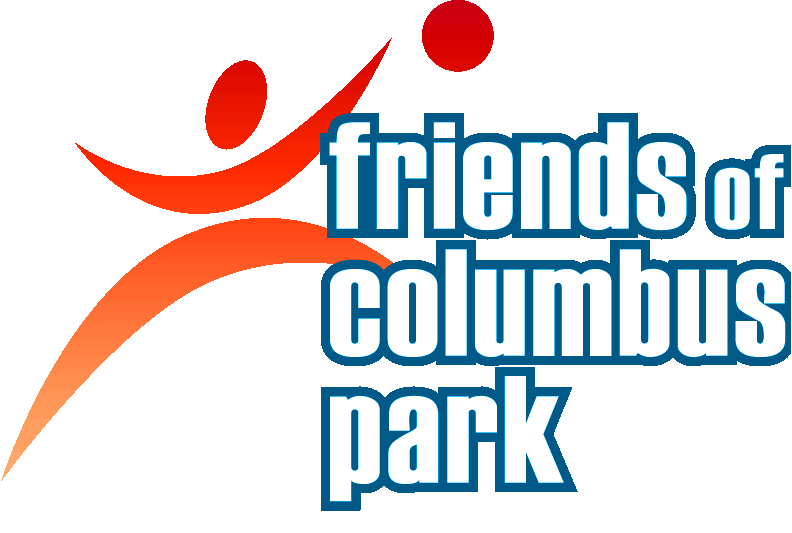


|
|
|
ABOUT FRIENDS of COLUMBUS PARK 14TH ANNUAL SUMMER FIELD DAY for KIDS JUNE 2013 IN MEMORY of BOBBY LEE ROBERT LEE ALBERT SUN FINANCIAL LITERACY for KIDS 2010, 2011 JACQUELYNN YOUNG SCHOLARSHIP for HIGH SCHOOL SENIORS 2013 SUMMER FIELD DAY at COLUMBUS PARK ABOUT SPORTS for KIDS PICTURES COLUMBUS PARK PAVILION HISTORY RESTORATION GRAND OPENING - OUR VISION ALERT! ALERT! RATS, RATS, RATS in COLUMBUS PARK We are now members of the CHINATOWN WORKING GROUP COLUMBUS PARK BALL FIELD VICTORY ABOUT COLUMBUS PARK CURRENT ISSUES SPECIAL THANKS to OUR CONTRIBUTORS WHY KIDS?OUR KIDS, OUR FUTURE |
March 18, 2010 Hi Everyone, We have a growing "RAT" problem at Columbus Park and the surrounding neighborhood. The Health Dept. has been doing "RAT" Indexing (research) and hear is what they are saying (email sent to me March 1, 2010), "Columbus Park after years remains a challenging situation...........
a)
There is an extraordinary amount of food trash left in baskets each day and night;
b)
abundance of litter within the park that does not get collected on a regular
basis;
c)
many restaurants along Mulberry Street place out their trash each night and the
rats have easy access; d) and the park is located over very old subterranean lines of sewer, and even old streams. These subsurface areas no doubt serve as partial replenishes for rat control achieved at surface level. Many of the restaurants on Mulberry have failed for having rats on their premises; and thus there is likely a back and forth swapping of the rats from Columbus Park to Mulberry Street basements. 1. Baiting alone will NOT get this done. In fact, long term, it exacerbates it. 2. There also appears to be a hawk which is using the park for easy pickings of the rats; and so the Parks Dept will need to weigh in on “the risk to the hawk” if any large scale baiting is done. They will need to make the call.
We need to get involved. We need to change our ways. Cleaner/Safer neighborhoods must become more of our responsibility. It is our families that ultimately suffer. We are the one’s using Columbus Park and we are the ones that live in the neighborhood. This is a WAR against “RATS”, It is a war for a cleaner and safer neighborhood. It is time we take up arms and start strategizing a winning strategy. We cannot solely depend on others to fight this war, we need to work with our allies (Health Dept./Parks Dept./City of New York) and fight this war together. After all, it is our families that are the primary stake holders in this war. The time is now! Not tomorrow!
Open
to suggestions and ideas. Email me at, paulgong1@msn.com Paul Gong President of Friends of Columbus Park ------------------------------------------------------------------------------------------------ 3-22-10 Hi, Paul You forgot to cc me-but your letter was forwarded to me. DOH is not yet finished with indexing in CB 3. I am emailing to them to let them know they should have copied the CB on any reports for the area. We will work with you when we get the full report from DOH. We will need to look at results for whole community and look at possibilities and suggestions. I hope you will attend committee meeting when we do so we can all put our heads together. (one head per person) I have been working with Columbus Park issue. It is a challenge because the manager is CB 1 and the park is cb 3. However, we get lots of rats complaints-so I am always working on this. Recently I received complaints that plastic bags from Parks were being left overnight on Baxter. I arranged with Sanitation in CB 3 to pick these up to supplement Parks pick ups of garbage. If Parks bags are being left overnight again due to cut backs-please let me know. I can work on this. If there are other specific issues such as this-please also let me know. The biggest problem is that the park is so heavily used -and also that it is used by people eating food from the restaurants, there are many, many restaurants (which is also a problem in other parts of CB 3), and we have the court system that is not within our jurisdiction on their protocols. It is really great that you are collecting suggestions. I think I will also have this problem added to Chinatown Working Group 197 A plan. I will be in touch with you when we get report for area and we can figure out we can do together. In meantime-please let me know if there are specific issues, such as garbage bags, that I can deal with. Thanks. Susan Susan Stetzer District Manager Community Board 3, Manhattan 212-533-6015 Please visit the CB 3 website to join the new e-mail l ------------------------------------------------------------------------------------------------
Rats seek out a warm and safe place to spend
the nights, and so they go in attics. They then seek out things to gnaw on,
because that's what rodents do. These disease-ridden critters are nocturnal,
and can often be heard scampering up the walls and in the attic at night.
They chew on electrical wires, contaminate food, and spread diseases, such
as the ones outlined above.
-------------------------------------------------------------------------------------------------
|